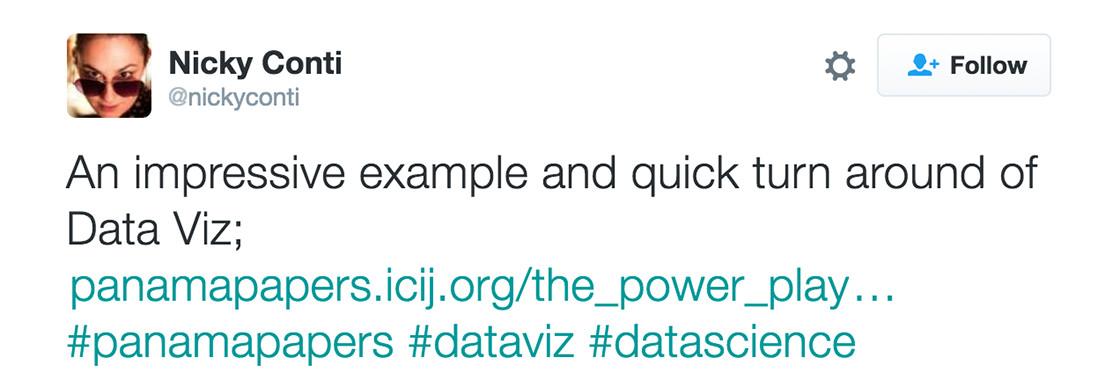The #dataviz revolution is a weird one. Specialists are tirelessly working on ways to make torrents of information digestible and visually compelling. But not all infographics are created equally; there is a host of possible mistakes, from font, to layout, to, you know, inaccurate data. Attempting to simplify major stories with a quick data visualization is potentially hugely irresponsible.
But challenges be damned! One of the most popular ways to present the complexities of the Panama Papers — a story of international politics and overseas money-shuffling — has been in graphic form.


So, were the Panama Papers a win for data viz? Experts say … not really. “Most of the data visualizations and infographics that are found on the web are horribly designed … because most of the people who create them have never been trained in the graphical representation of quantitative data,” says data viz expert Stephen Few. He says The New York Times and National Geographic have invested in capable teams, but most other publications haven’t. For example, he says this data visualization isn’t great because it’s too difficult to read, can’t be filtered, and the “clients” the graphic refers to aren’t identified.
Of this one, Few says that while the data is “more manageable,” there’s a lack of context. “A static image like this is rarely useful.” This one comes closest to accuracy, according to Few, because we can get an idea of which countries are involved and to what extent, but those bubbles appear to be sized incorrectly. “In other words, the data encoding is misleading.”
Nathan Yau, a statistician who runs the site FlowingData, echoed Few’s thoughts that yesterday’s attempts at infographic-izing the story were half-baked. It’s easy to get drawn into interactive visuals and heat maps, of course, but readers can spot red flags. Yau says you should look to see if a graphic explains why it is relevant and whether it notes where its data comes from. “Many makers slap a graphic together or plug a data set into the most convenient software and plop it online,” says Yau.
But we aren’t totally doomed: While the Internet of not-so-great/inaccurate graphics is only going to grow, experts are responding to that interest by educating creators. “I spend a great deal of my time doing what I can to combat this by teaching the skills and exposing the bad practices that undermine most examples that we find, not only on the web, but in the workplace as well,” Few says. According to Yau, readers are getting more critical and figuring out a good data visualization from a bad one. TL;DR: Stay woke, and don’t take pretty graphics at their word. Er, picture.
This piece originally appeared in the April 6, 2016, edition of the Ringer newsletter.
